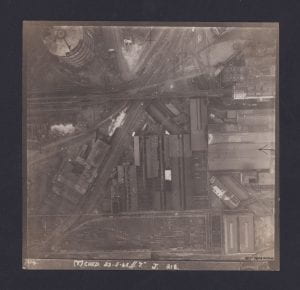International Archives Day is on the 9 June and this year, the IBCC Digital Archive team are marking the occasion by recognising and thanking the volunteers who participate in the Digital Archive’s workflow, as items move from scanning, photographing or recording, through to publication on the website. Our archive contents are so highly discoverable because of the work that they do.
Our digital technician, Robin Evans, is responsible for accessioning all new archival items. His tasks include giving each new scan (or photo) a unique filename, ensuring all the paperwork is in order (permissions etc), ensuring the digital master copes are safely stored, and creating smaller files (such as PDFs and mp3s) from them, for purposes of publication.
A full set of cataloguing details, or metadata, must then be added to each item. These include a description of the item, who created it, and date and place information. Once again, this information helps to connect users to items when they perform a search. Our very skilled metadata creators are Nigel Huckins, Barry Hunter, Trevor Hardcastle and Peter Adams. Digital Archivist Alessandro Pesaro has trained them all and works with them on a daily basis. Many of the collections they created were then reviewed and proofread by Beryl George.
Written and printed documents are transcribed, so that text-based items are searchable. We have amazing teams of transcribers, led by David Bloomfield and Steve Baldwin. Our transcribers include Tricia Marshall, Steve Christian, Jan Waller, Peter Bradbury, Sue Smith, Robin Christian, Alan Pinchbeck, Frances Grundy, Claire Monk, Anne-Marie Watson, Georgie Donaldson, Roger Dunsford, Bradley Froggatt and Angela Gaffney. Transcription is a slow and painstaking task, yet they turn in impressive volumes of completed transcriptions every month.
We do not fully transcribe log books; however, we have developed a new standard for describing their contents, so that (like other documents) they can be searched. Our experts in this area are Mike Connock, Mike French, David Leitch and Terry Hancock. Callum Davies, a Bishop Grosseteste University student, is also helping out as part of his studies. This example shows how the date of every operation is now captured, linking each log book with other events that took place the same day: https://ibccdigitalarchive.lincoln.ac.uk/omeka/items/show/2205
Oral testimonies are processed slightly differently. As far as possible, these are transcribed – but with over 1200 now in the archive, we have not been able to do them all. At the very least, therefore, we ensure each one has a summary that is searchable. Both the full transcriptions and the summaries must be carefully checked for accuracy – another task that is painstaking and requires very careful attention to detail. Our archivist Dan Ellin does a lot of reviewing himself, but also has a fantastic team of reviewers: Jean Massey, Graham King, Steph Jackson, Chris Johnson, Yvonne and Nick Walker, Emily Bird, Caroline and Graham Smith, Eunice Watson, Michael Cheesbrough and Brent Lintin.
There are further ways we can assist users to find what they are looking for. One is to add tags – these are words or phrases (for example, ‘childhood in wartime’ or ‘forced landing’ or ’166 Squadron’) that can be added to items, so that all items sharing a particular characteristic will show up in a search. Nigel Moore has quite literally checked every one of the over 24,000 items in our archive to ensure the tags are as accurate as possible: https://ibccdigitalarchive.lincoln.ac.uk/omeka/tags
We also have an online map feature in the archive. Thanks to Graham Emmet’s skills over the past few months, we now have 2,000 places plotted on this map, each providing direct access to a host of documents; see https://ibccdigitalarchive.lincoln.ac.uk/omeka/neatline/show/aerial-photographs-1.
Photographic images are among the most popular items in the archive. However, we have a large number of ‘mystery’ photos – individuals not identified, or places not identified – see https://ibccdigitalarchive.lincoln.ac.uk/omeka/mystery-items. Andy Shaw has proven to be exceptionally talented at identifying places. We did not think one aerial image of an industrial area could ever be identified but Andy managed it.
 It is Dortmund, near the railway station, and he solved the mystery with the help of a more recent image of what is now a derelict area. “I am secretly very chuffed with this one! The wartime photo is of such a small area that I didn’t fancy my chances. However, I have got a perfect fit”, Andy commented. So far, 438 aerial photos have been accurately positioned on a map and are accessible online.
It is Dortmund, near the railway station, and he solved the mystery with the help of a more recent image of what is now a derelict area. “I am secretly very chuffed with this one! The wartime photo is of such a small area that I didn’t fancy my chances. However, I have got a perfect fit”, Andy commented. So far, 438 aerial photos have been accurately positioned on a map and are accessible online.
Thank you, one and all! We could not have achieved so much without you.
Heather Hughes, Dan Ellin and Alex Pesaro
